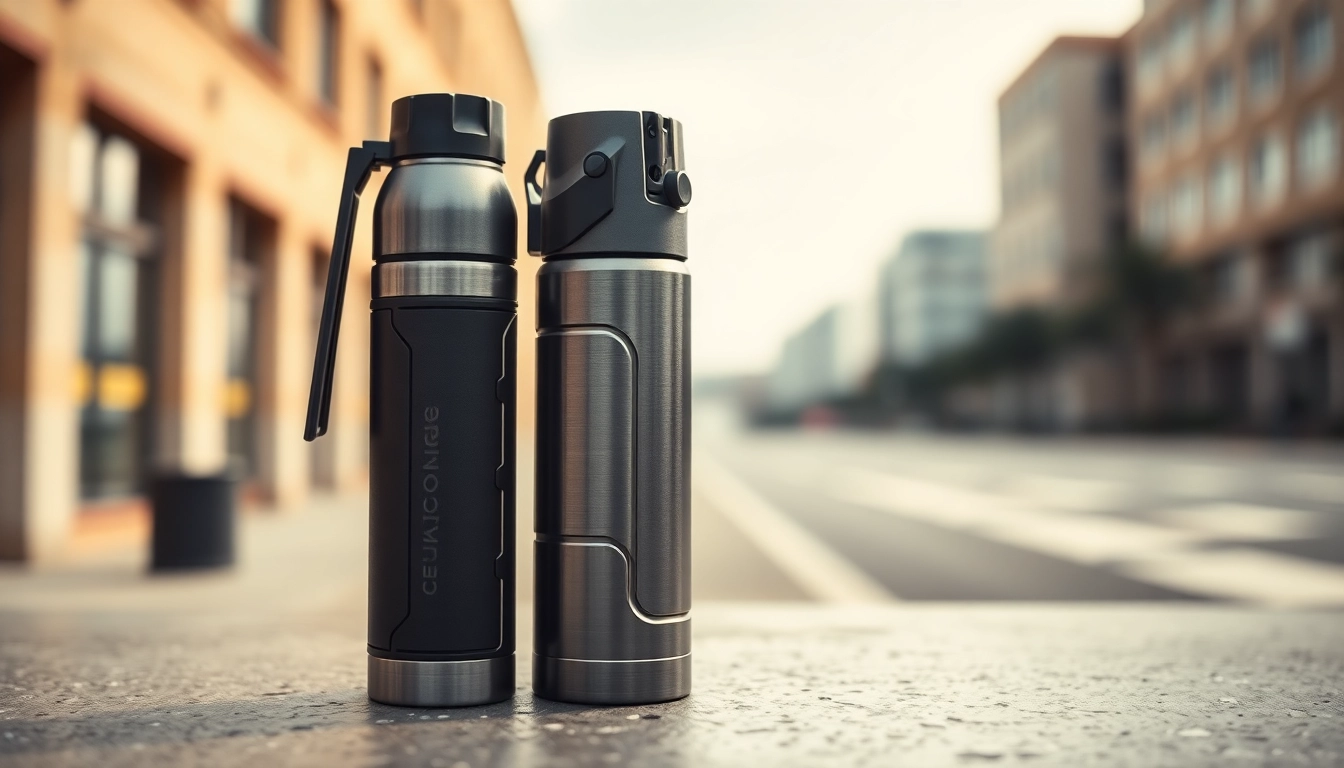Introduction to Pepper Spray and Its Uses
Pepper spray has emerged as a valuable self-defense tool in today’s society, offering individuals a means to protect themselves against potential threats. This non-lethal weapon, used widely for personal safety, serves a dual purpose in both self-defense and law enforcement. In recent decades, awareness and knowledge about pepper spray have significantly grown, leading to increased adoption. Whether you are looking to secure your own safety, aid in crowd control, or protect against animal attacks, understanding pepper spray is crucial.
The Basics of Pepper Spray
Pepper spray is a type of aerosol spray that contains capsaicin, an oil derived from hot peppers, making it an effective irritant. When sprayed into the face of an assailant, it causes temporary blindness, difficulty breathing, and irritation of the skin. Its potency varies based on concentration levels, and it can typically immobilize an attacker for several minutes, providing the victim with an opportunity to escape.
Common Applications of Pepper Spray
While the primary purpose of pepper spray is for personal protection, its applications extend into various scenarios. Some common uses include:
- Self-Defense: Individuals often carry pepper spray to defend themselves against potential assaults or attacks.
- Law Enforcement: Police and security personnel utilize pepper spray as a non-lethal means to manage violent behavior and control crowds during riots or protests.
- Animal Defense: Pepper spray can also be used to deter aggressive animals, especially in areas where wildlife encounters are common.
Regulations Surrounding Pepper Spray Usage
In the context of self-defense tools, understanding the regulations governing pepper spray is crucial. These rules can vary significantly by state and locality, dictating the allowable size, strength, and permissible use of the spray. Always check local laws to ensure compliance and avoid potential legal issues.
Choosing the Right Pepper Spray
Factors to Consider When Selecting a Pepper Spray
Choosing the right pepper spray involves evaluating a variety of factors to ensure it meets your needs:
- Size: Consider how you plan to carry your pepper spray. Options range from small keychain models to larger canisters.
- Range: The effective range of pepper sprays can vary, typically between 8 to 20 feet, which can influence your choice based on your expected usage scenario.
- Spray Pattern: Different types include stream, fog, and gel. Stream sprays offer more precision, while fog can cover a wider area, making it suitable for multiple attackers or tighter spaces.
Types of Pepper Spray Available
Several types of pepper spray exist, each designed for specific applications:
- Stream: Provides a concentrated spray for targeted application.
- Gel: A thicker formulation that reduces wind blowback and allows for greater accuracy.
- Fog: Disperses in a spray pattern suitable for use in enclosed spaces or against multiple assailants.
Understanding Strength Ratings and Formulations
Pepper spray is categorized by its concentration of active ingredient, typically expressed in Scoville Heat Units (SHU). Products may contain concentrations ranging from 1% to over 20% for extreme cases. Higher concentrations generally yield more intense effects, but they may also lead to legal restrictions depending on local laws.
How to Properly Use Pepper Spray
Effective Techniques for Deployment
Deploying pepper spray effectively requires practice and knowledge:
- Grip: Hold the canister firmly, ensuring your thumb is on the bottom and your index finger is on the actuator nozzle.
- Aim: Position the spray at the eye level of the aggressor, ensuring it is directed towards their face.
- Spray: Aim for a quick two-second burst, ensuring you move back afterward to maintain distance.
Safety Precautions When Using Pepper Spray
Using pepper spray comes with inherent risks. Key safety measures include:
- Ensure adequate ventilation if deploying indoors.
- Be mindful of wind direction to prevent accidental exposure to yourself or bystanders.
- Store pepper spray away from children and check for obstructions in the spray nozzle before use.
Recommended Training for Safe Use
Participating in self-defense courses where pepper spray techniques are taught can be invaluable. Training improves confidence and ensures you are able to react appropriately in real-life scenarios involving pepper spray.
Legal Considerations and Restrictions
State and Local Laws Regarding Pepper Spray
Before purchasing or carrying pepper spray, familiarize yourself with your region’s laws. Most states allow its use, but some impose restrictions on strength, type, and purchase age. Adhering to local legislation is critical to avoid legal ramifications.
Carrying Pepper Spray in Public
In most cases, carrying pepper spray in public is permitted, but context matters. Be cautious about using it unless absolutely necessary, as misuse can lead to criminal charges. Always be aware of your surroundings and local regulations governing its use.
Consequences of Misuse of Pepper Spray
Improper use of pepper spray, such as using it for offensive purposes rather than self-defense, can have significant legal consequences, including fines and criminal charges. Awareness and responsibility when carrying pepper spray are paramount.
Maintaining and Storing Pepper Spray
Best Practices for Storage
Proper storage can significantly extend the lifespan of your pepper spray. Store it in a cool, dry place, away from direct sunlight and excessive heat. Excessive temperatures can degrade the propellant and the active ingredient, rendering the spray ineffective.
How to Inspect and Maintain Your Pepper Spray
Regularly inspecting your pepper spray ensures it functions correctly when needed. Check:
- Expiration Date: Most pepper sprays have a shelf life of 2-4 years. Replace it regularly to ensure efficacy.
- Nozzle Condition: Test the nozzle at least once a year to verify it isn’t clogged and sprays effectively.
- Physical Condition: Look for signs of damage, such as swelling or leaks, which may compromise the spray.
Understanding Expiration and Replacement Needs
Understanding when to replace your pepper spray is vital. Marking the purchase date and checking the expiration regularly can help to avoid carrying an ineffective product. Knowing the replacement needs can contribute to your overall safety and security.
